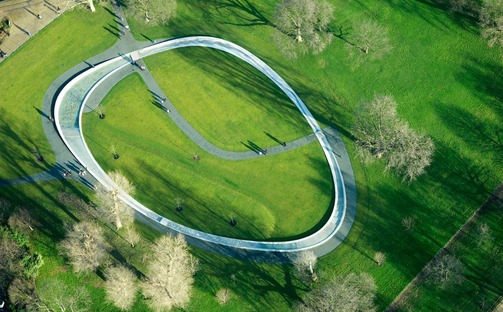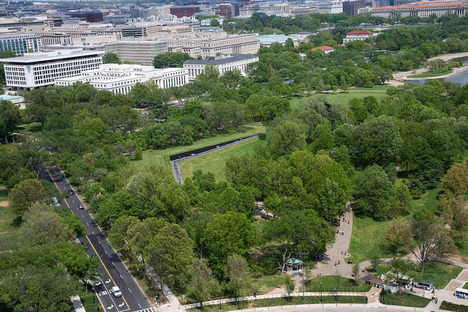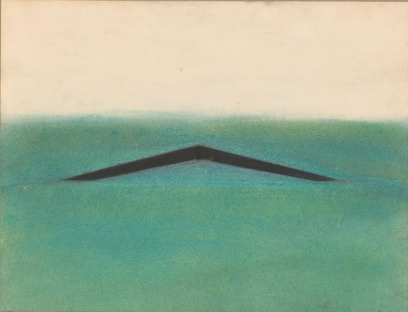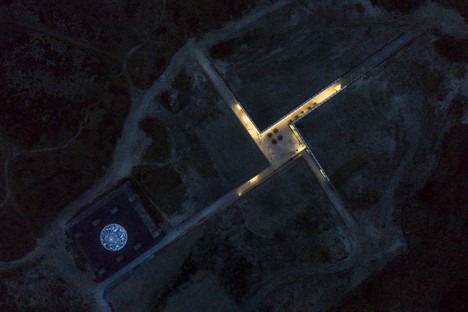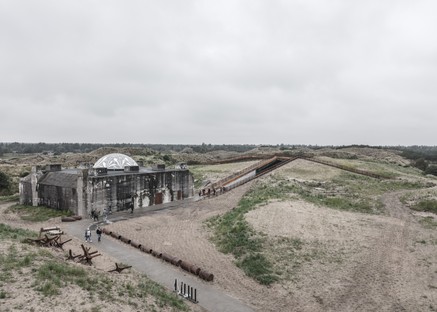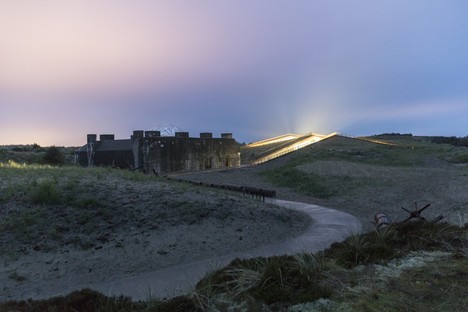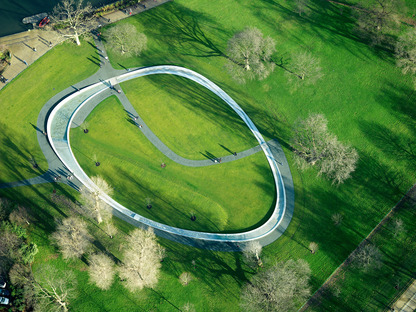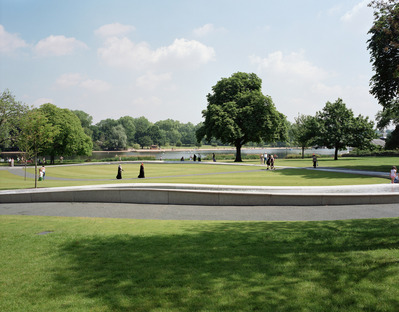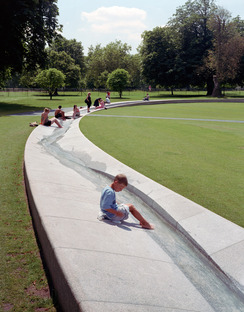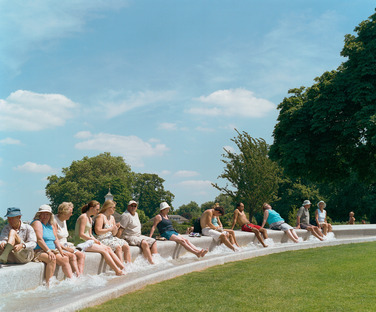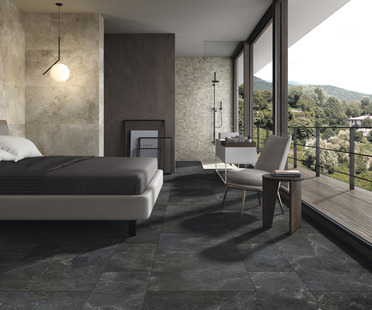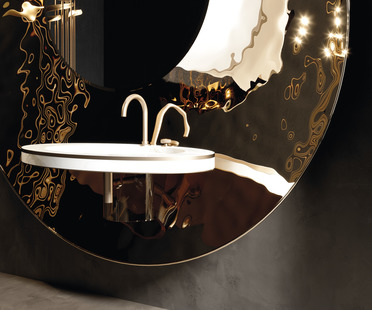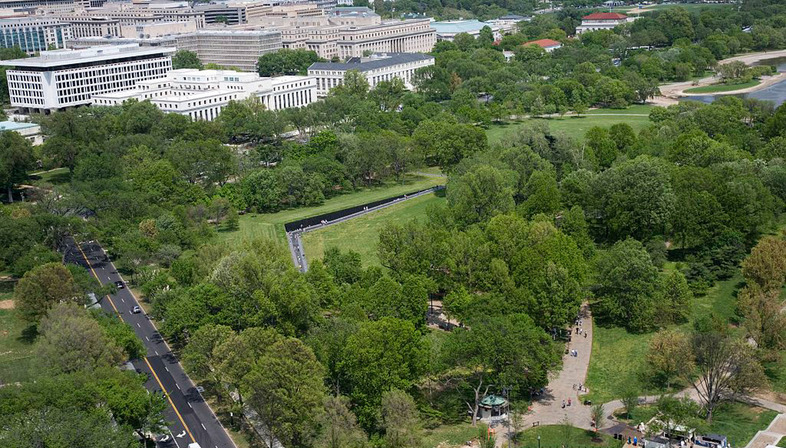 “Through the annihilation of language somehow comes the manifestation of the indeterminate“, Foucault, The thought from outside.
“Through the annihilation of language somehow comes the manifestation of the indeterminate“, Foucault, The thought from outside.Silence can be more eloquent than aggressive, violent words and verbal screams, and more than any words can provoke empathic connections. Same in architecture, concise, straightforward proposals, far from spectacular, redundant formalism, grab our soul through the poignant essentiality of their marks. Silence, therefore, becomes an essential encounter, a rare endangered species against the over abundance of today’s tempo. Meaningful, incisive, subtle gestures carry a beautiful silence and resonate loudly in our intimacy, inviting moments of deep reflection.
Maya Lin owns the expressiveness and the strength of this kind of silence. She was only a 21 years old architecture student of Yale, with no bachelor’s degree yet, when on May 1981, (selected between more than 1,400 submissions), she won in anonymity an official competition for a Vietnam Veteran Memorial. To shout to the world all her anger, disdain against a three decades long war, with its unacceptable atrocities, as emotional gesture, she “imagined taking a knife and cutting into the earth, opening it up, an initial violence and pain that in time would heal”. The act in its disarming apparent simplicity resonates with strong symbolic evocations, implying a real sensory experience and interaction.
The surgical incision in the ground emphasizes the relevant narrative, enhancing the perception of losses and grievances, which have torn the womb of mother earth with shameful brutalities and cruelties. A wall of polished black granite sunken into the ground, inscribed with the names of the dead (nearly 58,000 names of men and women killed or missing in action), deepens the chasm, forcing the visitors to get closer to read the names in small characters and allowing to see themselves reflected, with awareness of an individual responsibility. The V- shaped wall, with its 150 degree opening, offers a comforting hug in the moment of sorrow. The unconventional, unadorned black scar in its row nudity and crudity was at that time certainly too new and strongly contrasting with traditional, conventional figurative monuments, people were used to, and misinterpreted as ‘a black gash of shame’, a ‘nihilist’ statement, aroused bitter voices of displeasure. Only once the monument was built, over the years, families and veterans started to come more and more numerous, almost overwhelming the site, perceiving the silent vibrations of the absent presences and contributing to the atmosphere of intimacy that Lin intended to create.

Changing completely the scenery, from the park of Washington we find on the shore lands of Blavand, west coast of Denmark. Four voids, digging into the traces of a sedimented past, lead us as allusive, silent paths to an emblematic encounter, radiating and anticipating the solemnity of the moment. Using the landscape as personal canvas, the architect, Bjarke Ingels wisely marks the underground embedded presence of the new invisible museum of Tirptiz, solemnizing the disclosure through a progressive climax of tension, created by the deep cracks as prodromes to the event. Memories of hidden stories gradually emerge, the concrete block of a bunker nearby with its cold monolithic presence helps to rebuild the dramatic atmosphere of the site’s war history. Once overcome the emotional impact, natural daylight inundates through the long lacerations a large courtyard, heart of the museum, from which branch off the four gallery spaces of the complex. And from the silence the history starts to speak again.
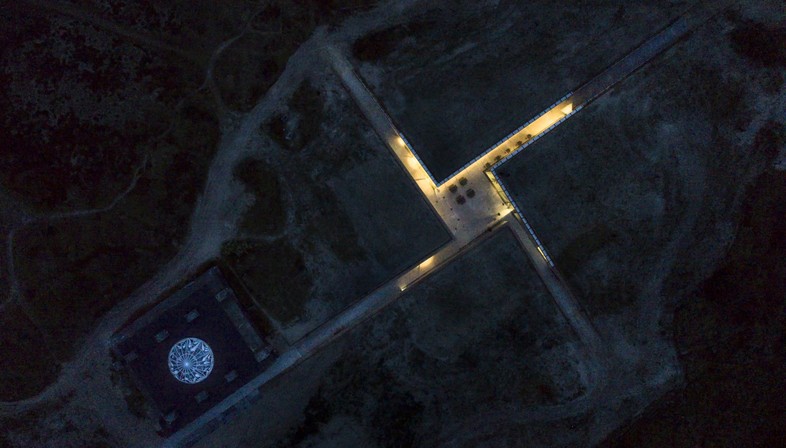
Another sign, this time a ring, used with explicit allegorical meaning and as contoured water feature, marks with its symbolic allusiveness the green lawn of Hyde Park, London. It’s Diana, Princess of Wales Memorial Fountain, conceived and realized by Gustafson Porter + Bowman. As tribute to the People’s Princess, to her contemporary charismatic openness, the inviting layout of the curved water path set lightly on the meadow without interrupting the open landscape, permeates the environment of energy, attracting people to reach a physical contact. All ages, from young kids to teenagers and adults, perceive the message and, catalyzed by the playfulness spirit of the sculptured loop, interact even with too enthusiastic participation. The fountain’s sculptural form, unobtrusively beautiful and harmoniously blended with its surrounding, adapts to the natural sloped topography and the water flows downhill, fairly smooth along one side, with cascades, swirls and bubbles along the other, due to the corrugated surface of the stream bed, metaphorically reflecting the two alternate aspects of Diana’s life, moments of joy and intense sadness.
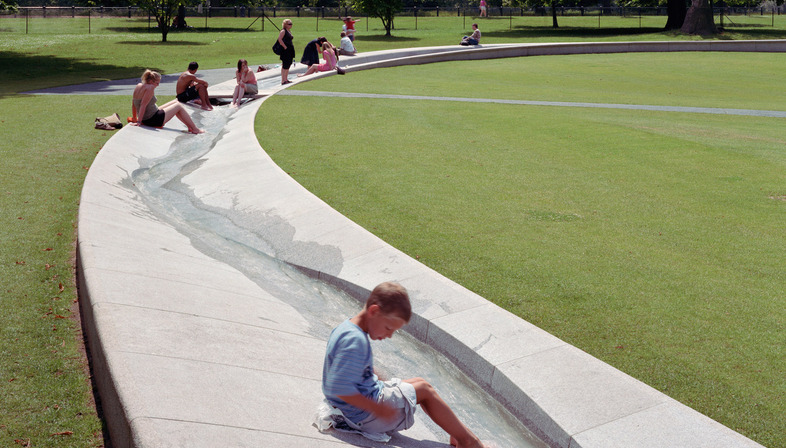
What emerges from these different projects is a common concision rich in multiple nuances. They murmur as no one will listen to them but the resonance is high. The gestures stand immobilized in a potentiality to be, or not to be. The empathy they are able to establish is the lifeblood of their essences: coral participation they arouse feeds them, making their presences resound as instruments waiting to be used. Without this correspondence of senses they would remain only petrified notes.
Credits:
Gustafson Porter + Bowman: https://www.gp-b.com/
BIG: https://big.dk/
Maya Lin: http://www.mayalin.com
Photography:
Gustafson Porter + Bowman: Courtsey of Gustafson Porter + Bowman
BIG: Courtsey by Big, photographer image 3, 5 Tirpitz Museum © Laurian Ghinitou, image 4 © Rasmus Hjortshøj
Maya Lin: Image 1, 2 via Library of Congress, released to public domain by Vietnam Veterans Memorial Fund










